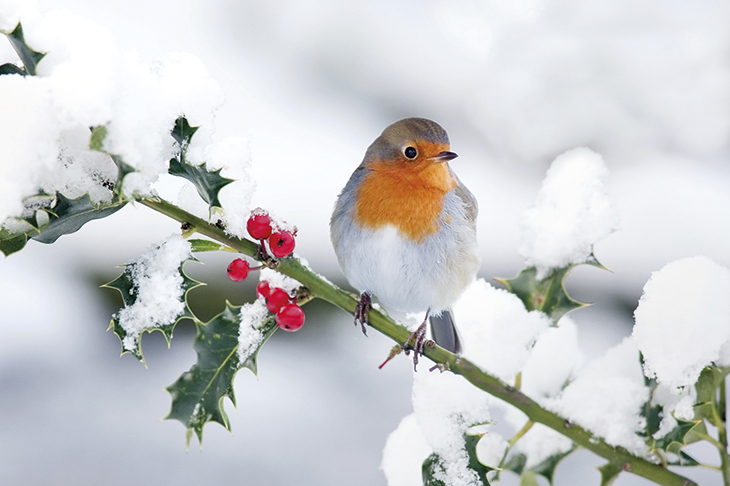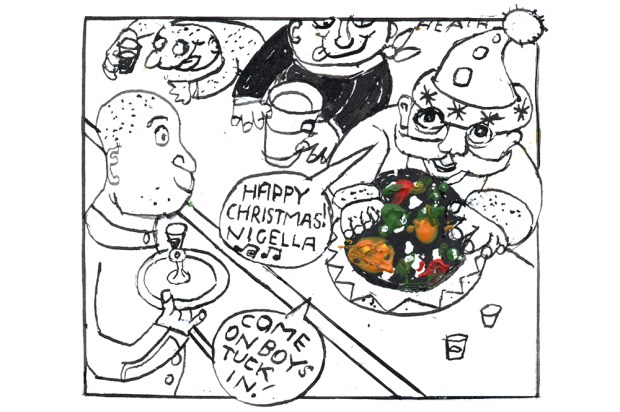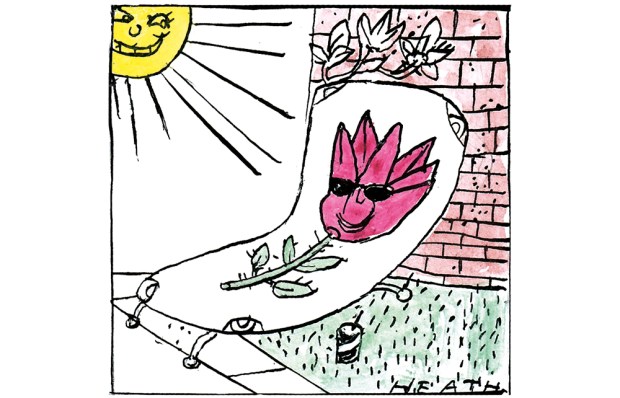At the risk of sounding like Sid James in some late period Carry On, I currently have two birds on the go. One in the garden, one at the allotment, both real beauties — both robins.
I’m smitten and I suspect I’m not alone. With much of the nation either working from home or on actual gardening leave, robins have become more familiar than ever.
Most species of garden birds are horribly in decline (around 60 per cent of house sparrows, for instance, have been lost since the mid-1970s), but the robin has stubbornly stuck around in great numbers.
While those other great survivors, magpies and pigeons, are brash and ungainly, the robin is a delicate little gem: magpie song is shrill, pigeon dumbly repetitive, but robin chirrups are a delight. They’re bold, too. Other garden birds flap away when we appear, but not robins. In fact, they approach — as inquisitive as a kitten.
The robin has a territory that ‘can be as small as a half acre’. With 16 allotment plots to the acre, and with me currently renting two, this means I may have as much as a quarter share in my very own robin. And though I suspect my second robin, my back-garden bird, is a good deal more promiscuous with her affections among my neighbours and me, she still always appears as soon as I venture out of the back door. For outdoor human activity is their cue. Recently, in lieu of any Bonfire Night, I had my own celebratory blaze on the allotment, burning, bit by bit, buddleia, bramble and fruit tree prunings. As soon as I started unpicking this mound of wood, there she was, following my every footstep, darting around where I had just been, feasting on the bugs that I was shaking from their cover, for hours.
I say ‘she’ but frankly I don’t know. No doubt your Chris Packham types would be able to gender a robin from half an acre away, but to the untrained amateur, male and female are very much interchangeable. They don’t do a drab incarnation, like, say, the blackbird or the pheasant, so you get twice the pleasure.
Robins are a recurrent lyrical motif, in John Donne, The Secret Garden, the Jackson 5. Blake put our protective human fondness succinctly: ‘A Robin Red breast in a Cage/Puts all Heaven in a Rage.’
And, of course, the robin is the Boy Wonder’s spirit bird in Batman. Imagine trying to pitch that set-up today. ‘I like this Bat guy – very dark and cool. What are we doing for the kid? A scorpion? Eagle?’ ‘No, we thought a robin.’ Yet it works, accentuating the character’s chirpy loyalty.
But their definitive cultural perch is on Christmas cards. They’ve somehow smuggled themselves right up to the outer glowing light of the greeting card nativity scene, apparent survivors, along with holly, ivy and mistletoe, of pre-Christian winter festivals, one of the few flashes of colour in the bleak midwinter. Though the holly bears a berry as red as any blood, the red of the robin is lighter, the tone of tinned tomato soup, comfort warming on a cold winter night.
Just go outside with a trowel and she will soon appear. And despite the Christmas connotation, she’ll still be there in the yet bleaker days of January and February. Because robins are very much for enhancing life, not just for Christmas.
Got something to add? Join the discussion and comment below.
Get 10 issues for just $10
Subscribe to The Spectator Australia today for the next 10 magazine issues, plus full online access, for just $10.
You might disagree with half of it, but you’ll enjoy reading all of it. Try your first month for free, then just $2 a week for the remainder of your first year.














Comments
Don't miss out
Join the conversation with other Spectator Australia readers. Subscribe to leave a comment.
SUBSCRIBEAlready a subscriber? Log in